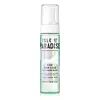What's inside
What's inside
 Key Ingredients
Key Ingredients

 Benefits
Benefits

 Concerns
Concerns

 Ingredients Side-by-side
Ingredients Side-by-side

Cocos Nucifera Water
MaskingDihydroxyacetone
Skin ConditioningPropylene Glycol
HumectantEthoxydiglycol
HumectantPEG-40 Hydrogenated Castor Oil
EmulsifyingGlycerin
HumectantDecyl Glucoside
CleansingGlycereth-26
HumectantErythrulose
TanningAgastache Mexicana Flower/Leaf/Stem Extract
Skin ConditioningPanthenol
Skin ConditioningAloe Barbadensis Extract
Skin ConditioningCitrus Grandis Peel Oil
MaskingCocos Nucifera Oil
MaskingEucalyptus Globulus Leaf Oil
PerfumingMentha Piperita Oil
MaskingPersea Gratissima Oil
Skin ConditioningSalvia Hispanica Seed Oil
MoisturisingSalvia Officinalis Oil
MaskingTropaeolum Majus Flower/Leaf/Stem Extract
Skin ConditioningMethoxyphenyl T-Butylphenyl Propanediol
Skin ConditioningAscorbic Acid
AntioxidantEthylhexylglycerin
Skin ConditioningPropanediol
SolventSodium Metabisulfite
AntioxidantParfum
MaskingPhenoxyethanol
PreservativeTriethylene Glycol
MaskingCocos Nucifera Water, Dihydroxyacetone, Propylene Glycol, Ethoxydiglycol, PEG-40 Hydrogenated Castor Oil, Glycerin, Decyl Glucoside, Glycereth-26, Erythrulose, Agastache Mexicana Flower/Leaf/Stem Extract, Panthenol, Aloe Barbadensis Extract, Citrus Grandis Peel Oil, Cocos Nucifera Oil, Eucalyptus Globulus Leaf Oil, Mentha Piperita Oil, Persea Gratissima Oil, Salvia Hispanica Seed Oil, Salvia Officinalis Oil, Tropaeolum Majus Flower/Leaf/Stem Extract, Methoxyphenyl T-Butylphenyl Propanediol, Ascorbic Acid, Ethylhexylglycerin, Propanediol, Sodium Metabisulfite, Parfum, Phenoxyethanol, Triethylene Glycol
Water
Skin ConditioningCaprylic/Capric Triglyceride
MaskingPentylene Glycol
Skin ConditioningMethylene Bis-Benzotriazolyl Tetramethylbutylphenol
UV FilterTitanium Dioxide
Cosmetic ColorantEthylhexyl Salicylate
UV AbsorberBis-Ethylhexyloxyphenol Methoxyphenyl Triazine
Skin ConditioningC12-15 Alkyl Benzoate
AntimicrobialDiethylamino Hydroxybenzoyl Hexyl Benzoate
UV FilterEthylhexyl Triazone
UV AbsorberGlycerin
HumectantSilica
AbrasiveSqualane
EmollientCocoglycerides
EmollientHydrogenated Phosphatidylcholine
EmulsifyingC8-22 Alkyl Acrylates/Methacrylic Acid Crosspolymer
Acrylates Copolymer
Ectoin
Skin ConditioningDecyl Glucoside
CleansingVitis Vinifera Seed Extract
AntimicrobialPropyl Alcohol
SolventCetyl Phosphate
EmulsifyingCetyl Alcohol
EmollientAlcohol
AntimicrobialSodium Hydroxide
BufferingXanthan Gum
EmulsifyingPropylene Glycol
HumectantLecithin
EmollientTocopheryl Acetate
AntioxidantAscorbyl Tetraisopalmitate
AntioxidantTocopherol
AntioxidantDiisopropyl Adipate
EmollientUbiquinone
AntioxidantCitric Acid
BufferingWater, Caprylic/Capric Triglyceride, Pentylene Glycol, Methylene Bis-Benzotriazolyl Tetramethylbutylphenol, Titanium Dioxide, Ethylhexyl Salicylate, Bis-Ethylhexyloxyphenol Methoxyphenyl Triazine, C12-15 Alkyl Benzoate, Diethylamino Hydroxybenzoyl Hexyl Benzoate, Ethylhexyl Triazone, Glycerin, Silica, Squalane, Cocoglycerides, Hydrogenated Phosphatidylcholine, C8-22 Alkyl Acrylates/Methacrylic Acid Crosspolymer, Acrylates Copolymer, Ectoin, Decyl Glucoside, Vitis Vinifera Seed Extract, Propyl Alcohol, Cetyl Phosphate, Cetyl Alcohol, Alcohol, Sodium Hydroxide, Xanthan Gum, Propylene Glycol, Lecithin, Tocopheryl Acetate, Ascorbyl Tetraisopalmitate, Tocopherol, Diisopropyl Adipate, Ubiquinone, Citric Acid
Ingredients Explained
These ingredients are found in both products.
Ingredients higher up in an ingredient list are typically present in a larger amount.
Decyl Glucoside is a glucose-based surfactant and emulsion stabilizer. It is created by reacting glucose with the fatty acids from plants.
Surfactants help clean the skin by trapping oil, sebum, and dirt to be washed away. As an emulsion stabilizer, it stabilizes the ingredients in a product by preventing them from separating.
This ingredient is biodegradable and non-toxic. This ingredient is commonly found in baby shampoos.
Decyl Glucoside is sometimes used to stabilize the UV filter Tinosorb.
Learn more about Decyl GlucosideGlycerin is already naturally found in your skin. It helps moisturize and protect your skin.
A study from 2016 found glycerin to be more effective as a humectant than AHAs and hyaluronic acid.
As a humectant, it helps the skin stay hydrated by pulling moisture to your skin. The low molecular weight of glycerin allows it to pull moisture into the deeper layers of your skin.
Hydrated skin improves your skin barrier; Your skin barrier helps protect against irritants and bacteria.
Glycerin has also been found to have antimicrobial and antiviral properties. Due to these properties, glycerin is often used in wound and burn treatments.
In cosmetics, glycerin is usually derived from plants such as soybean or palm. However, it can also be sourced from animals, such as tallow or animal fat.
This ingredient is organic, colorless, odorless, and non-toxic.
Glycerin is the name for this ingredient in American English. British English uses Glycerol/Glycerine.
Learn more about GlycerinPropylene Glycol is an odorless, colorless liquid. As a humectant, it helps skin retain moisture. It also aids in delivering active ingredients.
Another role of this ingredient is preventing a product from melting or freezing. Propylene glycol also adds antimicrobrial properties to a product, elongating product lifespan.
This ingredient is considered an organic alcohol and commonly added into both cosmetics and foods.
Those with sensitive skin or conditions may develop a rash when using this ingredient.
Learn more about Propylene Glycol